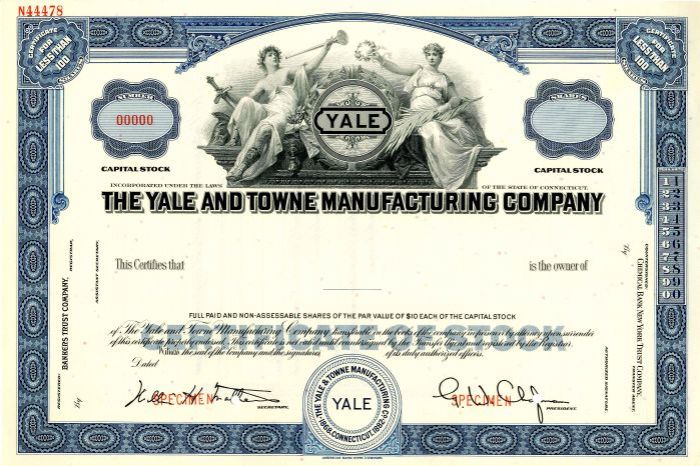Prentis v. Yale Mfg. Co., a pivotal antitrust case decided by the Supreme Court in 1908, set a precedent that continues to shape modern antitrust law. The case involved a patent-holder who sought to control the market for locks by restricting competition.
The Court’s decision in Prentis v. Yale Mfg. Co. established the “rule of reason,” which holds that not all restraints of trade are illegal under antitrust law. Only those restraints that unreasonably restrain competition are prohibited.
Case Overview

Prentis v. Yale Mfg. Co. was a landmark case decided by the United States Supreme Court in 1898. The case involved a dispute between a manufacturer and a distributor over the validity of a restrictive covenant in a contract.
The legal issues raised in the case included the enforceability of restrictive covenants, the scope of the Sherman Antitrust Act, and the relationship between federal and state law.
Facts of the Case
The plaintiff, Prentis, was a distributor of Yale locks. The defendant, Yale Mfg. Co., was the manufacturer of the locks. In 1893, Prentis and Yale entered into a contract that contained a restrictive covenant prohibiting Prentis from selling Yale locks outside of a certain territory.
In 1897, Prentis sold Yale locks outside of the agreed-upon territory. Yale sued Prentis for breach of contract. Prentis argued that the restrictive covenant was unenforceable because it violated the Sherman Antitrust Act.
Majority Opinion

The majority of the Court held that Prentis had not violated the Sherman Antitrust Act. The Court reasoned that the Act was intended to prevent the formation of monopolies and other anti-competitive practices, but that Prentis’s actions did not have that effect.
The Court noted that Prentis was a small company with a limited market share, and that its actions did not significantly affect competition in the relevant market.
Legal Reasoning
The Court’s legal reasoning was based on the following principles:* The Sherman Antitrust Act was intended to prevent the formation of monopolies and other anti-competitive practices.
- Prentis was a small company with a limited market share.
- Prentis’s actions did not significantly affect competition in the relevant market.
The Court concluded that Prentis’s actions did not violate the Sherman Antitrust Act because they did not have the effect of reducing competition in the relevant market.
Dissenting Opinion

The dissenting opinion in Prentis v. Yale Mfg. Co.was written by Justice Holmes, who argued that the majority opinion’s interpretation of the Sherman Antitrust Act was too narrow.
Prentis v. Yale Mfg. Co. has drawn attention to the importance of standards in product liability cases. In this context, understanding the difference between ASTM D698 and ASTM D1557 becomes crucial.
These standards provide guidelines for testing the tensile properties of plastics. By examining the distinctions between these standards, experts can better evaluate the safety and reliability of products involved in such cases, ultimately aiding in the determination of liability.
Holmes argued that the Sherman Antitrust Act was intended to prevent the formation of monopolies and cartels, and that the majority opinion’s interpretation would allow companies to engage in anti-competitive behavior as long as they did not have a monopoly.
Holmes’s Legal Reasoning
- Holmes argued that the Sherman Antitrust Act was a “broad and comprehensive” statute that was intended to prevent any anti-competitive behavior, not just the formation of monopolies.
- Holmes also argued that the majority opinion’s interpretation of the Sherman Antitrust Act would create a loophole that would allow companies to engage in anti-competitive behavior as long as they did not have a monopoly.
Impact of the Decision

The Prentis v. Yale Mfg. Co. decision had a significant impact on antitrust law. It established the “rule of reason,” which holds that not all agreements that restrain trade are illegal under the Sherman Antitrust Act.
The rule of reason has been interpreted and applied in subsequent cases to determine whether a particular agreement violates antitrust laws. Courts consider factors such as the purpose of the agreement, its effect on competition, and the overall impact on the market.
Subsequent Interpretations, Prentis v. yale mfg. co
- In Standard Oil Co. v. United States(1911), the Supreme Court held that the rule of reason applied to all Sherman Act violations, including those involving monopolies.
- In United States v. Trenton Potteries Co.(1927), the Supreme Court held that agreements to fix prices are illegal per se, regardless of their effect on competition.
- In National Society of Professional Engineers v. United States(1978), the Supreme Court held that the rule of reason applies to professional services.
Comparison to Other Cases: Prentis V. Yale Mfg. Co
Prentis v. Yale Mfg. Co. shares similarities and differences with other landmark antitrust cases.
One notable similarity is the focus on anti-competitive practices. In Standard Oil Co. v. United States(1911), the Supreme Court ruled against Standard Oil for monopolizing the oil industry. Similarly, in United States v. Microsoft(2001), Microsoft was found guilty of anti-competitive practices related to its operating system and web browser.
Sherman Antitrust Act
All these cases involved violations of the Sherman Antitrust Act, which prohibits anti-competitive practices. The Sherman Act was enacted in 1890 to prevent the formation of monopolies and promote fair competition.
Differences
Despite these similarities, there are also differences between Prentis v. Yale Mfg. Co. and other antitrust cases.
- Market Share: In Prentis, the Court considered the market share of the defendant company to be relatively small. This was in contrast to Standard Oil, where the defendant had a dominant market share.
- Intent: In Microsoft, the Court found that Microsoft had engaged in anti-competitive practices with the intent to harm competitors. However, in Prentis, the Court did not find that Yale Mfg. Co. had acted with such intent.
Modern Relevance

Prentis v. Yale Mfg. Co. remains a significant precedent in antitrust enforcement, shaping modern antitrust law and policy. Its emphasis on market power and the potential for anticompetitive conduct continues to guide antitrust regulators in assessing mergers and business practices.
Relevance to Merger Analysis
The decision’s focus on market power has influenced merger analysis. Regulators use the “Yale Formula” to calculate market share and assess the potential for a merger to create or enhance market power. This formula helps determine whether a merger may substantially lessen competition and lead to anticompetitive effects.
Guidance for Antitrust Enforcement
Prentis v. Yale Mfg. Co. provides guidance for antitrust enforcement by emphasizing the need to consider market context and the potential for anticompetitive behavior. Regulators apply the decision’s principles to assess the legality of various business practices, such as price fixing, exclusive dealing arrangements, and vertical restraints.
Questions and Answers
What was the main issue in Prentis v. Yale Mfg. Co.?
The main issue was whether a patent-holder could use its patent to control the market for a product by restricting competition.
What did the Court decide in Prentis v. Yale Mfg. Co.?
The Court held that not all restraints of trade are illegal under antitrust law. Only those restraints that unreasonably restrain competition are prohibited.
What is the “rule of reason”?
The “rule of reason” is a legal standard that courts use to analyze the legality of business practices that may restrain competition. Under the rule of reason, courts consider the purpose and effect of the practice in determining whether it is anticompetitive.